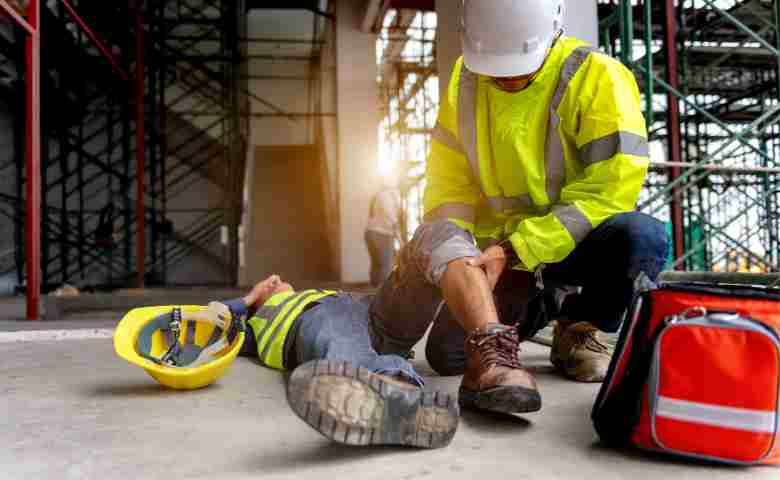Last Updated on August 23, 2024 by Admin
In the context of occupational hazards, few industries present as many risks as the construction sector. Construction sites are inherently dangerous, with many potential risks, including falls, equipment failures, and structural collapses. Despite rigorous safety protocols and regulations, accidents in this domain are common, often leading to severe injuries or even fatalities. Understanding the rights and avenues available for recourse in the aftermath of such unfortunate incidents is crucial.
This article aims to shed light on the necessary steps and considerations for ensuring rights and safety post-construction accidents.
Table of Contents
Understanding Legal Rights And Representation
After a construction accident, one of the first and most critical steps is to seek legal advice and representation. A construction accident lawyer is pivotal in navigating the complex legal landscape encompassing workers’ compensation, personal injury law, and occupational safety regulations. They specialize in advocating for the rights of those injured on construction sites, ensuring that victims receive the compensation and support they need for recovery and rehabilitation.
Immediate Actions To Take Following An Accident
When a construction accident occurs, swift and appropriate action is paramount for those involved’s safety, health, and legal rights. The immediate steps taken in the aftermath of an accident play a critical role in ensuring the well-being of the injured party and set the foundation for any necessary legal and compensation processes.
Below are the immediate actions to take after an accident:
1. Report The Incident
The immediate response following a construction accident is crucial. The incident should be reported to the relevant authorities and site management immediately. This can help initiate the formal documentation process and ensure that the incident is investigated promptly, which is vital for future legal action.
2. Seek Medical Attention
The importance of prioritizing medical care can’t be overstressed. Even if injuries seem minor, underlying issues might not be immediately apparent. A timely medical evaluation can provide a clear record of injuries, which is essential for any subsequent claims.
Navigating Workers’ Compensation

In many countries, including the United States, workers’ compensation is a mandatory system that benefits employees who suffer work-related injuries or illnesses. Understanding the nuances of this system is vital for anyone involved in a construction accident. For instance, filing a workers’ compensation claim is a time-sensitive matter. Employees should know the deadlines and required documentation to ensure a smooth claim process. It’s also important to remember that while workers’ compensation can provide necessary support, it might not cover all expenses related to the injury.
Dealing With Personal Injury Claims
Navigating the complexities of personal injury claims requires understanding and strategic action, especially in the context of construction accidents. When an accident results from negligence or results in severe injury, pursuing a personal injury claim becomes a viable option. This type of legal action goes beyond the scope of workers’ compensation, potentially offering broader compensation that covers not just medical expenses and lost wages but also non-economic damages such as pain, suffering, and emotional distress.
In this case, engaging a lawyer who specializes in personal injury law is crucial. Their expertise and experience are instrumental in evaluating the strength of the claim, negotiating with insurance companies, and advocating for fair compensation. They can provide invaluable guidance on legal rights and procedures, helping the victim navigate the intricacies of the legal system and ensuring their rights are adequately represented and protected.
Long-Term Considerations After A Construction Accident
The impact of a construction accident extends far beyond the immediate aftermath. It necessitates a comprehensive approach to address the long-term consequences faced by the victims. These considerations are crucial in ensuring a full recovery and safeguarding the future of the individuals affected and the construction industry.
Below are the key areas of long-term consideration following a construction accident:
1. Rehabilitation And Returning To Work
Post-accident rehabilitation is a critical phase in the journey towards recovery. It often involves a multidisciplinary approach, including physical therapy, occupational therapy, and sometimes psychological support, tailored to the specific needs of the injured individual. The goal is not only to regain lost physical abilities but also to adapt to any lasting changes.
In this context, discussions with employers about returning to work become essential. This might involve modified duties or workplace adjustments to accommodate any long-term effects of the injury. Effective communication between the injured party, medical providers, and the employer is key to creating a feasible and supportive plan for reintegration into the workforce.
2. Ongoing Support And Resources
The aftermath of a construction accident often requires ongoing support beyond immediate medical care. Victims may need continuous physical therapy to regain full mobility and strength. Equally important is psychological counseling to address any trauma and emotional distress caused by the accident. Financial advice is also crucial, as managing expenses during recovery can be challenging, especially if the accident results in reduced earning capacity.
Lastly, leveraging community resources, such as support groups for accident victims, can provide emotional support and practical advice, fostering a sense of community and shared experience that’s invaluable in the healing process.
3. Safety Training And Protocols
In the wake of a construction accident, a renewed focus on safety training and protocols is imperative. After a construction accident, a renewed focus on safety training and protocols is imperative. This training should be ongoing and adapt to new technologies and methods.
Moreover, strict adherence to safety protocols must be addressed. Regular safety audits and enforcing compliance are crucial steps in preventing future accidents. By promoting a culture prioritizing safety, the industry can protect its workers and enhance its reputation and efficiency.
Takeaway
Navigating the aftermath of a construction accident is a multifaceted challenge. It involves understanding and asserting one’s legal rights, dealing with immediate medical and reporting procedures, and considering the long-term implications and needs. By keeping the information mentioned above in mind, the individuals involved can deal with the accident’s aftermath more effectively, ensuring their rights are protected from start to finish.
Related Posts:
- Maximizing Safety in Construction Management
- Steps to Take After a Construction Site Injury
- Expert Construction Accident Attorney Services – Get the Compensation You Deserve
- Your Guide to Civil Engineering Online Courses


